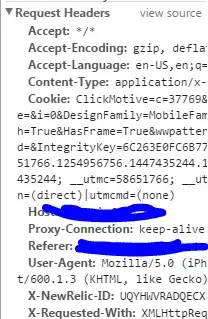I just setup tinyproxy for the first time, and I'm trying to make it mimic a normal connection as closely as possible. I already disabled the Via header, but I'm not sure how to change the Proxy-Connection:keep-alive header. I would like for it to simply be Connection:keep-alive. I understand that Proxy-Connection is not only revealing of proxy usage, but unnecessary according to sites like this.
To be honest, I'm not sure exactly what party is sending this header, whether it's my local machine or the remote tinyproxy. How would one either verify this and/or change this in the configuration?
Edit:
I'm seeing the header when I use the proxy while browsing in Chrome. Inspecting the request headers in chrome reveals:
